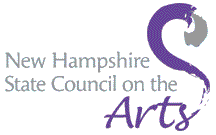Ernie Spence’s Favorites
 I
I
had the great pleasure of participating in a special dance evening on
Sunday. Dubbed “Ernie’s Favorites,” the program honored the
memory of the late Ernie Spence (1925–2011), a beloved dancer in
the Boston area.
For
many years a vice-principal of the Reading, MA, High School, Ernie
was a long-time dancer, going back to summers in the late 1940s
working at the Sargent Camp in the Monadnock region of New Hampshire.
He and his wife Joan became enthusiastic dancers, and they started
making regular trips from the Boston area on weekends to dance to the
calling of Duke Miller at his popular dance series in Fitzwilliam,
NH.
In
an interview for the “Paid To Eat Ice Cream” video, the
Spences recalled, “The phone would start ringing on Monday with
kids calling to reserve a space for the weekend.” Ernie and Joan
would fill up the back of their station wagon with eager students;
that’s how noted dance musician Peter Barnes and many others got
their first exposure to the world of traditional squares and contras.
Ernie
was a delight on the dance floor, a smooth and stylish dancer who
took gentlemanly care of his partners.

